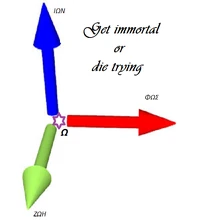Ολική Παράγωγος
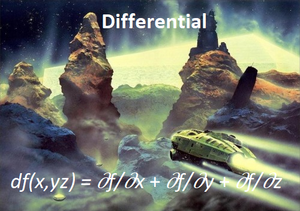

Ανάδελτα Εφαπτομένη Εφαπτόμενο Διάνυσμα Εφαπτομενικός Χώρος Διαφορικός Τελεστής Παράγωγος
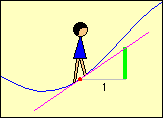
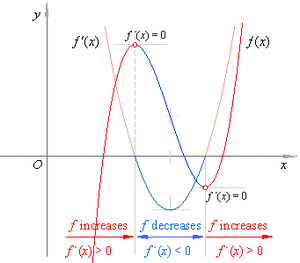
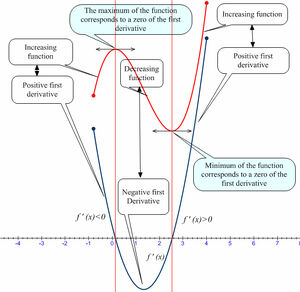
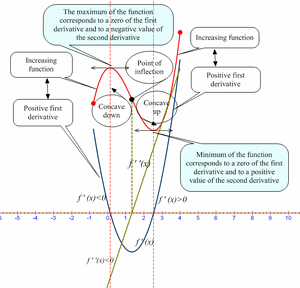
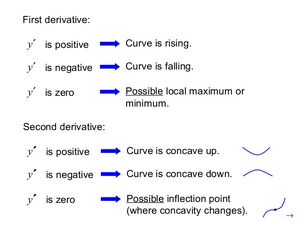
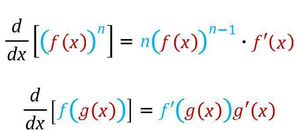
- Ένας Διαφορικός Τελεστής.
Ετυμολογία[]
Η ονομασία "Παράγωγος" σχετίζεται ετυμολογικά με την λέξη "παραγωγή".
Περιγραφή[]
In the mathematical field of differential calculus, a total derivative or full derivative of a function of several variables, e.g., , , , etc., with respect to an exogenous argument, e.g., , is the limiting ratio of the change in the function's value to the change in the exogenous argument's value (for arbitrarily small changes), taking into account the exogenous argument's direct effect as well as its indirect effects via the other arguments of the function.
The total derivative of a function is different from its corresponding partial derivative (). Calculation of the total derivative of with respect to does not assume that the other arguments are constant while varies; instead, it allows the other arguments to depend on . The total derivative adds in these indirect dependencies to find the overall dependency of on [1]Πρότυπο:Rp For example, the total derivative of with respect to is
which simplifies to
Consider multiplying both sides of the equation by the differential :
The result is the differential change in, or total differential of, the function . Because depends on , some of that change will be due to the partial derivative of with respect to . However, some of that change will also be due to the partial derivatives of with respect to the variables and . So, the differential is applied to the total derivatives of and to find differentials and , which can then be used to find the contribution to .
"Total derivative" is sometimes also used as a synonym for the material derivative, in fluid mechanics.
Differentiation with indirect dependencies[]
Suppose that f is a function of two variables, x and y. Normally these variables are assumed to be independent. However, in some situations they may be dependent on each other. For example y could be a function of x, constraining the domain of f to a curve in . In this case the partial derivative of f with respect to x does not give the true rate of change of f with respect to changing x because changing x necessarily changes y. The total derivative takes such dependencies into account.
For example, suppose
- .
The rate of change of f with respect to x is usually the partial derivative of f with respect to x; in this case,
- .
However, if y depends on x, the partial derivative does not give the true rate of change of f as x changes because it holds y fixed.
Suppose we are constrained to the line
then
- .
In that case, the total derivative of f with respect to x is
- .
Instead of immediately substituting for y in terms of x, this can be found equivalently using the chain rule:
Notice that this is not equal to the partial derivative:
- .
While one can often perform substitutions to eliminate indirect dependencies, the chain rule provides for a more efficient and general technique. Suppose M(t, p1, ..., pn) is a function of time t and n variables which themselves depend on time. Then, the total time derivative of M is
The chain rule for differentiating a function of several variables implies that
This expression is often used in physics for a gauge transformation of the Lagrangian, as two Lagrangians that differ only by the total time derivative of a function of time and the n generalized coordinates lead to the same equations of motion. An interesting example concerns the resolution of causality concerning the Wheeler–Feynman time-symmetric theory. The operator in brackets (in the final expression) is also called the total derivative operator (with respect to t).
For example, the total derivative of f(x(t), y(t)) is
Here there is no ∂f / ∂t term since f itself does not depend on the independent variable t directly.
The total derivative via differentials[]
Differentials provide a simple way to understand the total derivative. For instance, suppose is a function of time t and n variables as in the previous section. Then, the differential of M is
This expression is often interpreted heuristically as a relation between infinitesimals. However, if the variables t and are interpreted as functions, and is interpreted to mean the composite of M with these functions, then the above expression makes perfect sense as an equality of differential 1-forms, and is immediate from the chain rule for the exterior derivative. The advantage of this point of view is that it takes into account arbitrary dependencies between the variables. For example, if then . In particular, if the variables are all functions of t, as in the previous section, then
Dividing through by dt gives the total derivative dM / dt.
The total derivative as a linear map[]
Let be an open subset. Then a function is said to be (totally) differentiable at a point , if there exists a linear map (also denoted Dpf or Df(p)) such that
The linear map is called the (total) derivative or (total) differential of at . A function is (totally) differentiable if its total derivative exists at every point in its domain.
Note that f is differentiable if and only if each of its components is differentiable. For this it is necessary, but not sufficient, that the partial derivatives of each function fj exist. However, if these partial derivatives exist and are continuous, then f is differentiable and its differential at any point is the linear map determined by the Jacobian matrix of partial derivatives at that point.
Total differential equation[]
Πρότυπο:Main A total differential equation is a differential equation expressed in terms of total derivatives. Since the exterior derivative is a natural operator, in a sense that can be given a technical meaning, such equations are intrinsic and geometric.
Application to equation systems[]
In economics, it is common for the total derivative to arise in the context of a system of equations.[1]Πρότυπο:Rp For example, a simple supply-demand system might specify the quantity q of a product demanded as a function D of its price p and consumers' income I, the latter being an exogenous variable, and might specify the quantity supplied by producers as a function S of its price and two exogenous resource cost variables r and w. The resulting system of equations,
determines the market equilibrium values of the variables p and q. The total derivative of, for example, p with respect to r, gives the sign and magnitude of the reaction of the market price to the exogenous variable r. In the indicated system, there are a total of six possible total derivatives, also known in this context as comparative static derivatives: dp/dr, dp/dw, dp/dI, dq/dr, dq/dw, and dq/dI. The total derivatives are found by totally differentiating the system of equations, dividing through by, say dr, treating dq/dr and dp/dr as the unknowns, setting dI=dw=0, and solving the two totally differentiated equations simultaneously, typically by using Cramer's rule.
Υποσημειώσεις[]
Εσωτερική Αρθρογραφία[]
Βιβλιογραφία[]
- A. D. Polyanin and V. F. Zaitsev, Handbook of Exact Solutions for Ordinary Differential Equations (2nd edition), Chapman & Hall/CRC Press, Boca Raton, 2003. ISBN 1-58488-297-2
- From thesaurus.maths.org total derivative
Ιστογραφία[]
- Ομώνυμο άρθρο στην Βικιπαίδεια
- Ομώνυμο άρθρο στην Livepedia
- http://www.sv.vt.edu/classes/ESM4714/methods/df2D.html
- [ ]
|
Αν και θα βρείτε εξακριβωμένες πληροφορίες "Οι πληροφορίες αυτές μπορεί πρόσφατα Πρέπει να λάβετε υπ' όψη ότι Επίσης, |
- Μην κάνετε χρήση του περιεχομένου της παρούσας εγκυκλοπαίδειας
αν διαφωνείτε με όσα αναγράφονται σε αυτήν
- Όχι, στις διαφημίσεις που περιέχουν απαράδεκτο περιεχόμενο (άσεμνες εικόνες, ροζ αγγελίες κλπ.)











































